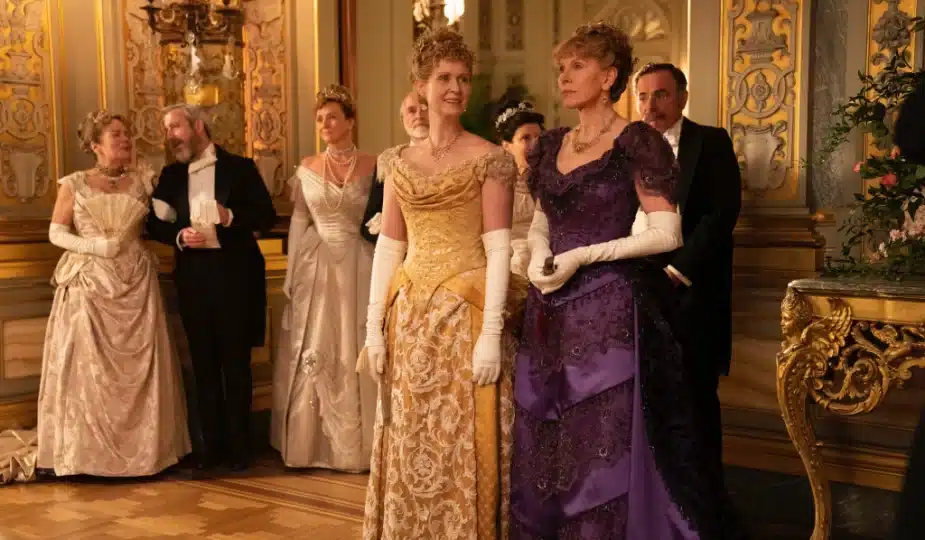When you think about Gilded Era fashion, Charles Frederick Worth should come to mind. He is known as “the father of haute couture” and his innovative business and fashion ideas paved the way for modern fashion.
You may not realize how the gilded age time period affected the future of fashion trends, but we are here to tell you all about it.
In this guide, you’re going to learn about some of the most popular trends in fashion, gilded age outfits, and why this time period specifically was so influential. Keep reading to learn everything you need to know about the history of fashion and more.
Gilded Age Time Period
Economic growth and the rise of industrialization are common characteristics that are associated with the Gilded Age time period.
This time fell between the 1870s in the 1890s.
Fashion often reflects the economy, and the gilded age is no different. Excess and huge displays of wealth were very common in this era, and you can see that through the outfits. The style is often characterized as luxurious, glamorous, and elegant.
Gilded Age Timeline
During the glided age, the trends shifted slightly. You can see the changes and differences primarily in women's fashion as the decades pass. However, men's fashion did change as well.
1870s
This is the Victorian Bustle Era 1870s and 1880s.
Exaggerated silhouettes were trending. In order to achieve this look, women would wear bell-shaped skirts, bustles, and corsets. Petticoats, jewelry, and gloves were also worn.
Men would commonly wear top hats, high collars, and tailored suits. You would also see men walking around with walking sticks and gloves.
Here are some fashion plates for the 1870s.
1880s
In the 1880s, full skirts and dresses were trending; however, they became slightly smaller and less prominent. Bustles were still very popular, as well as the ideal body shape, which was the hourglass figure.
Men’s fashion started to become more relaxed. Loose-fitting clothing started to be worn more frequently. Jackets and trousers were not as tight and fitted.
1890s
As time passed and a new decade began, there was a much bigger shift in fashion trends, especially for women. Hourglass silhouettes weren’t as popular and straight, flowy dresses were in.
Corsets were still worn; however, S-corsets became all the rage. They were designed to push the hips back and the chest up and forward.
Tailored suits for men were out and more casual, comfortable suits became more common.
Why is Gilded Age Fashion Popular
The gilded age was a time of prosperity and great wealth in the United States. This factor makes fashion in this era more popular as people are fascinated by glamor and elegance.
It’s also very relevant in today’s modern fashion. Fashion designers from all over draw inspiration from this fashion era. The details and colors capture people's attention the most.
Another reason why the Gilded Era is so popular right now is due to popular TV shows like "Downton Abbey" and "The Crown". They have drawn more attention to fashion during this time and they have sparked people’s interest in historical fashion.
Influence on Modern Fashion
There are many examples in today's fashion that show how the gilded age has influenced designers. It's still prevalent and can be seen in modern-day wedding and evening dresses.
During the Gilded Age, jewelry was a necessary accessory, and they wore elaborate necklaces, bracelets, and earrings. Often times these pieces contained precious stones in them.
While people don't often wear elaborate jewelry every day, we still value jewels. Now people tend to save them for special occasions.
Pastel colors were also popular during that time. Today, in the spring and summer months, we see an influx of clothing in these colors.
Colors and Fabrics
Women in the Gilded Age wore a variety of different fabrics. The majority of the time, they would wear fabrics and textures that are considered to be luxurious. For example, silk, velvet, satin, lace, and ornate embroidery.
The Gilded Age fashion colors that were worn the most often were deep and rich. Imagine emerald, sapphire, ruby, and other jewel tones. As mentioned earlier, pastels did make an appearance too.
Outfits
Many of the outfits were inspired by European styles, especially from France. Formal and casual outfits differed slightly and there was a big contrast in men's and women's fashion.
Women
Casual daywear looked very different in the Glided Age than it does now. Women would typically wear a long, full skirt with a high-necked blouse.
For more formal events, they would still wear Gilded Age dresses that were floor-length, but they are made of luxury fabrics and would be more extravagant. They would often wear coats or capes made of or trimmed with fur in the winter.
Men
During the day, men would wear full suits, including a jacket and vest. For formal events, they would wear tailcoats or tuxedos. Wool topcoats were common as well during the cold months.
Children
Children would wear similar outfits as adults. However, they were slightly more versatile and practical. The designs would be simpler and have shorter hemlines.
Gilded Age Fashion
Continuing to learn and study history is crucial. Learning about fashion trends and historical clothing can help us understand modern fashion and also give us inspiration for new designs.
The Gilded Age time period is so prominent when it comes to fashion and often times we forget about it.
Whether you’re looking for outfit inspiration or just curious about the history of fashion trends, our fashion era history section has everything you need. We have lots of resources and fashion tips that you’ll find useful and interesting, so don’t wait to check them out here.

